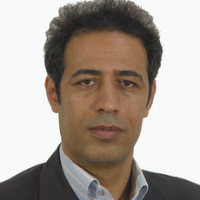The Role of Public Art in Urban Place Making, Case Study: Tehran Urban Parks
Author(s):
Article Type:
Research/Original Article (دارای رتبه معتبر)
Abstract:
In a period with series of developments in the field of demographic, technological, economic, political, etc. , considering restoration and improving urban life quality through the improvement and development of the unique features of a place and its people is necessary. Therefore, the idea of “Creative Placemaking” defines a type of urbanism that absolutely requires the presence of art and artists, and seeks to create places more than ever artistic and in a broader concept؛ cultural places. There are many tools for promoting communication between people and places, including cultural districts, artist relocation projects, municipal cultural planning, creative industries, public art, community art and urban design. This study aims to support cultural people-oriented policies - to a better understanding of what people are doing or wanting to do - keeping in mind the role of artistic activities and public art in urban spaces in explaining the relationship between public art and place making. In fact, what makes the significance of this research is to provide a context to understand the status and impact of the arts in shaping creative urban places. This study tries to answer these questions: pubic art on which aspects of placemaking is impressive? How do these effects manifest themselves? And it’s based on the assumption that there is a certain correlation between public art and the dimensions of placemaking. Most major cities have distinct and identifiable neighborhoods that artists and cultural entrepreneurs are attracted to them. According to the Relph and Canter’s “Place” model (1977) these successful places, consists of three components: activity (Economic, cultural and social), physical space (relations between buildings and spaces) and meaning (Sense of place, historical and cultural background). In this framework, a set of indicators can be found and used to assess the role and place of public art in the placemaking, as well as analyze the relative success of the process. So in this paper, in addition to codification a conceptual framework “the role of public art in place making”, the influencing factors of art on each of the main components of place - as a basis for research studies - were introduced. Accordingly, two samples which are the most important parks in Tehran (Mellat Park- literally the Nation Park- and Ab-o-Atash Park- literally the “Water-and-Fire Park), which are suitable for the evaluation of public art, were selected. Methodology of this study is based on documentary research and survey methods are descriptive and observational. Using literature review and outstanding documents about the concept of place and public art, this documentary study tries to extract the appropriate theoretical framework for the research methodology. To test the conceptual framework presented, after compiling and collecting questionnaires and ensuring the validity of the proposed model, comparison mental reading of people in two case study- A sample of 100 randomly selected individuals- were done with Structural equation modeling (SEM) and uses of AMOS 20. Results of this study reflect the impact of public art in each of the main components of place making and the relationships between these components. Public art in terms of economic, social and cultural promoting on activity component, in terms of shaping the built environment and the natural environment on form component, and in terms of creation the identity and legibility on semantic component of placemaking is effective. For urban spaces users, it seems that some examples of public art are considered to be more challenging, that somehow seek to convey information and meanings to the general public. The results of the analyzes also show that items related to the place branding, various rituals and ceremonies, monuments, performances and arts program that transmit different types of meanings associated with identity, history, culture and art, compared to items such as fountains, purely artistic elements, innovative urban furniture, etc. , are more important and more sensitive. Also, the results of the study indicate that the success of public art programs in the urban placemaking depends on respect for space and communicating with people. So if the artworks were created through a process that seeks to physically interpret the needs, values, desires, interests, dreams and prejudices of the people of that place, these can significantly help the citizen’s experience of the place
Keywords:
Language:
Persian
Published:
Journal of Architect, Urban Design & Urban Planning, Volume:11 Issue: 23, 2018
Pages:
147 to 158
magiran.com/p1891287
دانلود و مطالعه متن این مقاله با یکی از روشهای زیر امکان پذیر است:
اشتراک شخصی
با عضویت و پرداخت آنلاین حق اشتراک یکساله به مبلغ 1,390,000ريال میتوانید 70 عنوان مطلب دانلود کنید!
اشتراک سازمانی
به کتابخانه دانشگاه یا محل کار خود پیشنهاد کنید تا اشتراک سازمانی این پایگاه را برای دسترسی نامحدود همه کاربران به متن مطالب تهیه نمایند!
توجه!
- حق عضویت دریافتی صرف حمایت از نشریات عضو و نگهداری، تکمیل و توسعه مگیران میشود.
- پرداخت حق اشتراک و دانلود مقالات اجازه بازنشر آن در سایر رسانههای چاپی و دیجیتال را به کاربر نمیدهد.
In order to view content subscription is required
Personal subscription
Subscribe magiran.com for 70 € euros via PayPal and download 70 articles during a year.
Organization subscription
Please contact us to subscribe your university or library for unlimited access!



